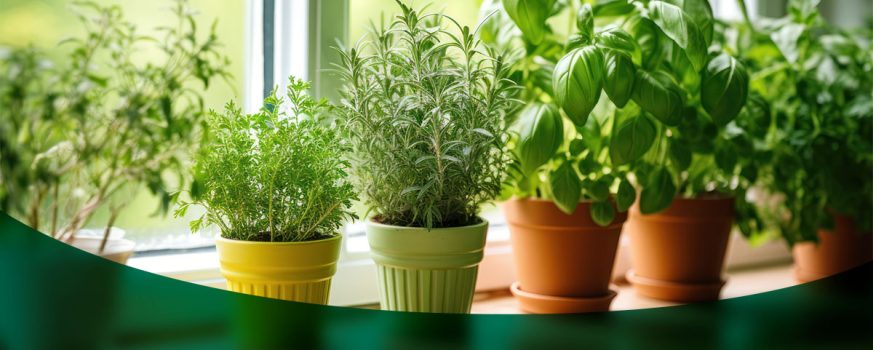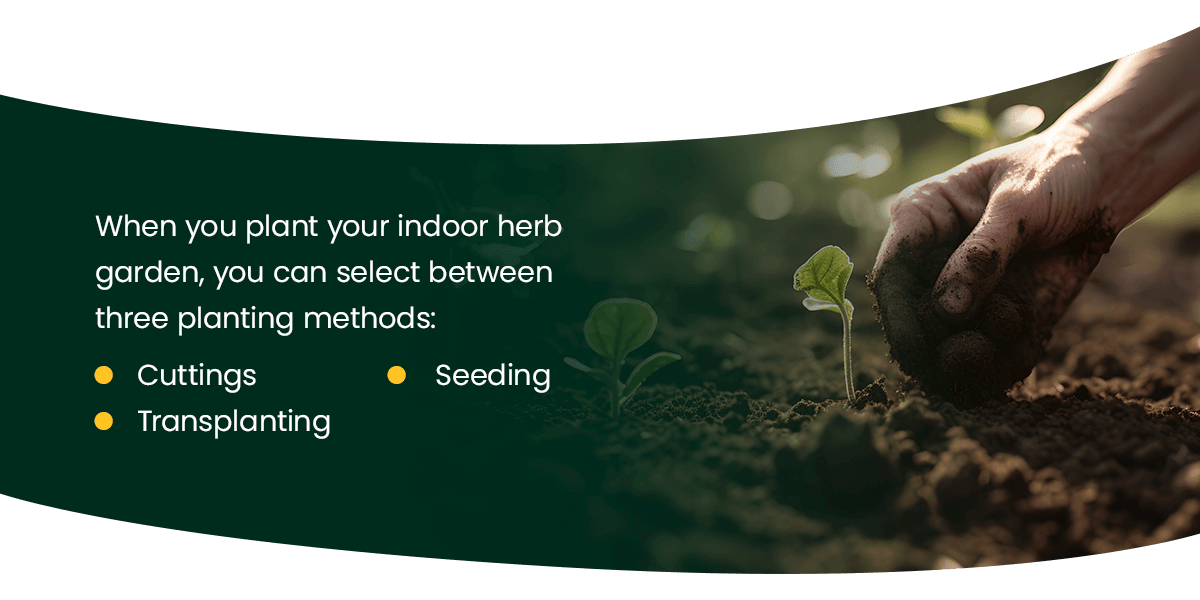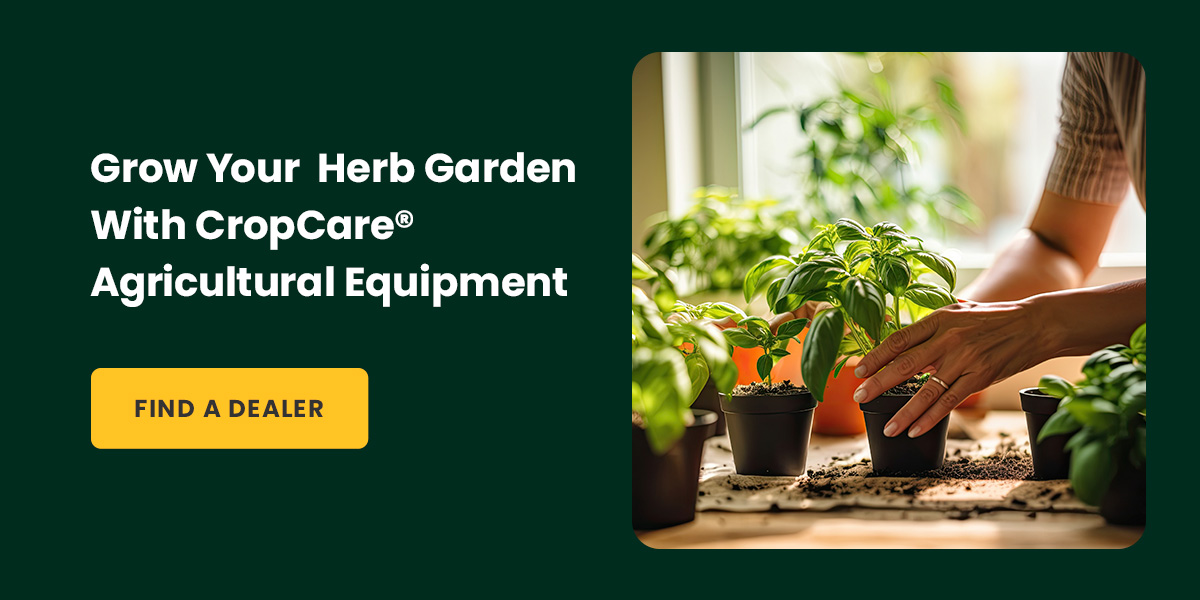
Herbs are popular for their aromas, fragrances and versatility. You can grow an herb garden indoors without contending with the elements. Many herb varieties like basil, cilantro, chives, parsley, dill and rosemary thrive indoors because you can control the lighting and climate.
An indoor herb garden also offers aromatic fragrances, ornamental features and easy access to garnishes when cooking.
How to Grow an Indoor Herb Garden
Growing an indoor herb garden requires suitable lighting, temperature, soil and containers. You’ll also need pest-free herbs ideal for growing indoors. Here’s what you need to grow an indoor herb garden:
Soil
Almost all plants grown indoors need potting soil. The type of soil you use depends on your herb varieties. For example, basil, which is native to warm or Mediterranean climates, needs loamy and fast-draining potting mix — if the soil is too moist, it can affect the growth. Potting mix can also suit other warm-climate varieties like mint. If you want to grow thyme and oregano, you might need a combination of potting soil and grainy materials like gravel. Suitable soil is vital for growing your herbs.
Pot or Container
Whether growing seeds or replanting a herb, you’ll need a suitable pot or container. Whichever you select, ensure it has drainage holes to allow water to run out and prevent downing your soil. When the roots sit in too much water, you run the risk of your plants contracting root rot, which can carry over to healthy roots even after drying out the soil.
Light
Your herbs will need light to thrive, but it’s important to strike a good balance. Plants require different light intensities, so consider the specific herbs you want to grow and how much light they need. For example, basil and mint don’t necessarily require direct sunlight to thrive indoors, but rosemary and thyme do.
A Good Spot
Place your herbs or containers on a high windowsill or a spot free from obstructions. If you have pets, placing them out of reach is vital. Herbs and soil can contain toxic material that can be harmful to pets.
Pest-Free Herbs
Consider pest-free herbs like rosemary and thyme to prevent attracting insects like mosquitoes and ants. These pests can harm your herb garden and impact your indoor living space. Opting for pest-free varieties is the best solution to avoid invasive insects.
Herb Planting Methods
When you plant your indoor herb garden, you can select between three planting methods:
Cuttings
Growing herbs from a cutting is an intricate task. You’ll need to cut a piece off a mature or fully grown herb — generally a 4-6 inch section of the plant with the cut just a leaf node. Remove the leaves at the bottom and then put the cutting in a glass of water. Place it in a sunny spot on a windowsill or under a light and switch the water out every few days. When the cutting grows roots, plant it in a container or pot with soil and continue nurturing it like a transplant or seed. Herbs like mint and basil are ideal for growing from cuttings.
Transplanting
If you replant your herbs, follow your nursery instructions for best practices. However, it’s vital to carefully remove the plants from their pots when transplanting to preserve the roots and soil. Herbs like oregano, sage thyme and bay laurel are great for transplanting.
Seeding
Lemon bulb, cilantro, basil and dill are great choices to grow from seeds. While product instructions can vary if you buy your seeds from a nursery, here are some general guidelines to follow when germinating your seeds:
- Lightly dampen your seeds on a paper towel.
- Add the soil to your containers — you can use cardboard seedling trays or egg cartons.
- Place one seed in each container, following the instructions on how deep to plant your seed.
- Water your seed by lightly misting or moistening it.
- Place a warm dome or glass over the seeds to increase germination.
- Place the container on a windowsill with light and sun or under a grow light.
- Remove the glass or heat dome when germination is complete or you see sprouting roots or leaves. Sprouting can happen within two days from the start of germination.
What Herbs Are Best to Grow Indoors?
When selecting herbs, you must pick varieties that can grow in your indoor climate. Some herbs require more sun, so you’ll need a south-facing window. Others might need less sun, requiring a west-facing window. At the same time, some herbs need a south and west-facing window. Here are some of the best plants to grow indoors:
- Basil: Basil is a common herb in dishes like salads, sandwiches and sauces. Basil requires a large growing area, so use a deep, wide pot when planting it indoors. It grows best with deep, infrequent watering and periodic pruning. Note that basil is an annual plant, so it will flower and die back every year.
- Bay laurel: Bay laurel or bay leaves are excellent in soups, stews and curries. You can also harvest the dry leaves, store and use them later on. Bay leaves need full sun and soil with good drainage, and they thrive as indoor-outdoor plants. They can grow as smaller shrubs or large trees reaching heights of over 60 feet.
- Chive: Chive has an onion aroma and is great for garnishing soups, eggs and salads. It grows rapidly and is great for transplanting. Chives need sun to thrive, require soil with good drainage and only need moderate watering.
- Lemongrass: Lemongrass adds fresh fragrance and aroma to dishes like curries and soups. It is also excellent in teas and cocktails. It requires bright sun and grows best in loamy soil with good drainage and plenty of water.
- Mint: Mint is excellent for use in food, desserts and drinks. It also offers an aromatic feature and is easy to grow indoors. Mint has many varieties, providing endless choices. It thrives in moist soil with good drainage and needs moderate to intense light. Frequent harvesting can promote healthy growth.
- Oregano: Oregano is a common seasoning for pizza, tomato sauces and soups. It provides a fresh aroma and requires little to moderate humidity. Place oregano in full sun using a container and soil with good drainage. This herb tends to grow better from cuttings than from seed.
- Parsley: Parsley is a popular garnish for chicken, fish, soups and salads. Parsley tends to grow best from seeding, with a container placed in full sunlight.
- Sage: Sage is an aromatic herb excellent in meat and poultry stuffings. While drought-resistant, it thrives with regular watering in sunny locations.
- Thyme: Thyme is a versatile herb. It requires sandy or rocky soil, good drainage and full sunlight. Trimming thyme seasonally can help promote healthy growth and propagation tends to work best from cuttings.
Grow Your Herb Garden With CropCare® Agricultural Equipment
CropCare® offers agricultural equipment to help you grow and harvest your small or mid-size herb garden. Our equipment offers adjustable features like spray and speed control so you can provide suitable soil moisture for your herbs. We also offer sprayers to help you treat and control fungal diseases.
Find a dealer near you.



